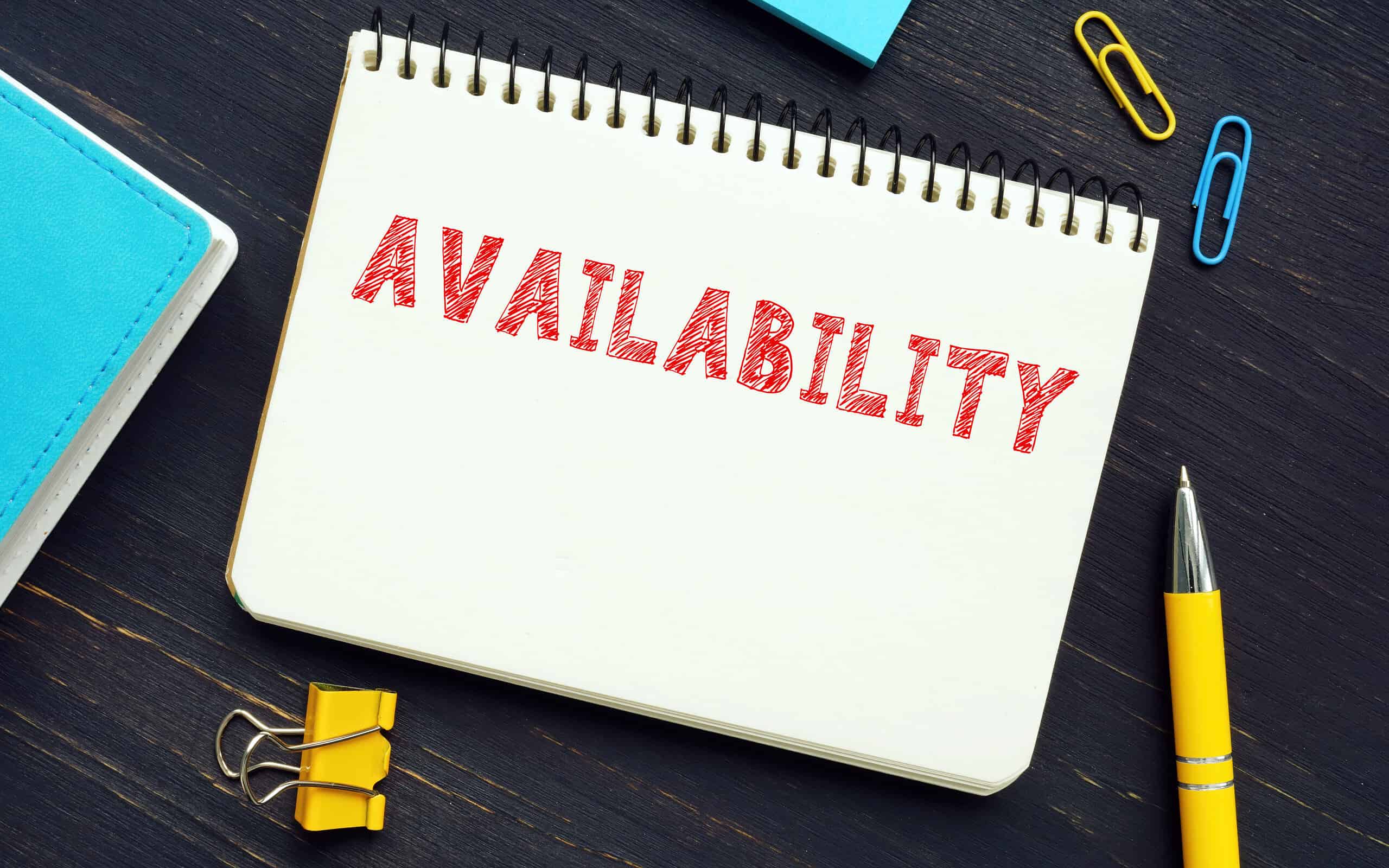
Do you know if your organization has the resources or people power ready-to-go when a large batch of orders comes in? If you are not sure, it would likely be helpful for your business to look at availability.
Overview: What is availability?
Availability is the readiness to perform for a specified purpose, under pre-determined conditions, when called upon to do so. This can be in reference to a product, a person, an organization, or a process.
3 benefits of availability
There are some major benefits of availability that should be noted:
1. Revenue
Availability protects companies against lost revenue.
2. Reliability
Being able to show availability ensures that the process is reliable.
3. Quality
Showing availability demonstrates a dedication to quality.
Why is availability important to understand?
It is important to understand availability for the following reasons:
Determining reliability
It is important to understand availability as it is a major factor in measuring reliability, which is the ability for a workload to do what it is supposed to do, when it is supposed to.
Resiliency
Understanding availability is crucial as it is one of the fundamental ways that we quantitatively measure resiliency.
Proper allotment of resources
Knowing about availability helps ensure that an organization is operating efficiently and that resources are not being wasted.
An industry example of availability
A low-budget television pilot is being filmed, and the plan is to rent RED cameras to shoot it. There, however, is some discrepancy when the number of hours a day shooting is planned for when compared up against the hours a day that the cameras can be rented. This is due to another project renting the cameras from 5:00 p.m. until the morning. The crew will need to factor in the availability of the cameras and adjust the production schedule.
4 best practices when thinking about availability
These are some practices to keep in mind when it comes to availability:
1. Keep failure in mind
In order to keep high availability, take a look at your organization and all the ways that it can fail. Do your best to create safeguards for when there are failures.
2. Build for tomorrow
Just because your process or product is working today, does not mean it will work tomorrow. Set your systems up to handle tomorrow’s growth so that you can maintain high availability.
3. Remove risk
In order to keep high availability, you must remove as much risk from your processes as possible.
4. Respond to availability issues in a set and predictable way
Establish processes and procedures that can be followed by your team in order to address availability issues when they arise.
Frequently Asked Questions (FAQ) about availability
How is availability measured?
It is a ratio measured by dividing “uptime” by “uptime + downtime”, or the total time. The equation is expressed as:
A = uptime / (uptime + downtime)
What is the availability of resources?
It refers to how accessible essential resources and tools are for a project.
How is resource availability measured?
One method is to compare the access to the resources against the planned working hours.
Availability and accountability
If your organization is taking on projects, you need to know if the availability of resources aligns with the needs of the project. Making plans and promises and not being able to deliver will hurt your business. If you can be sure that the availability of resources aligns with the needs of your clientele, you are more likely to have happy and regular customers.